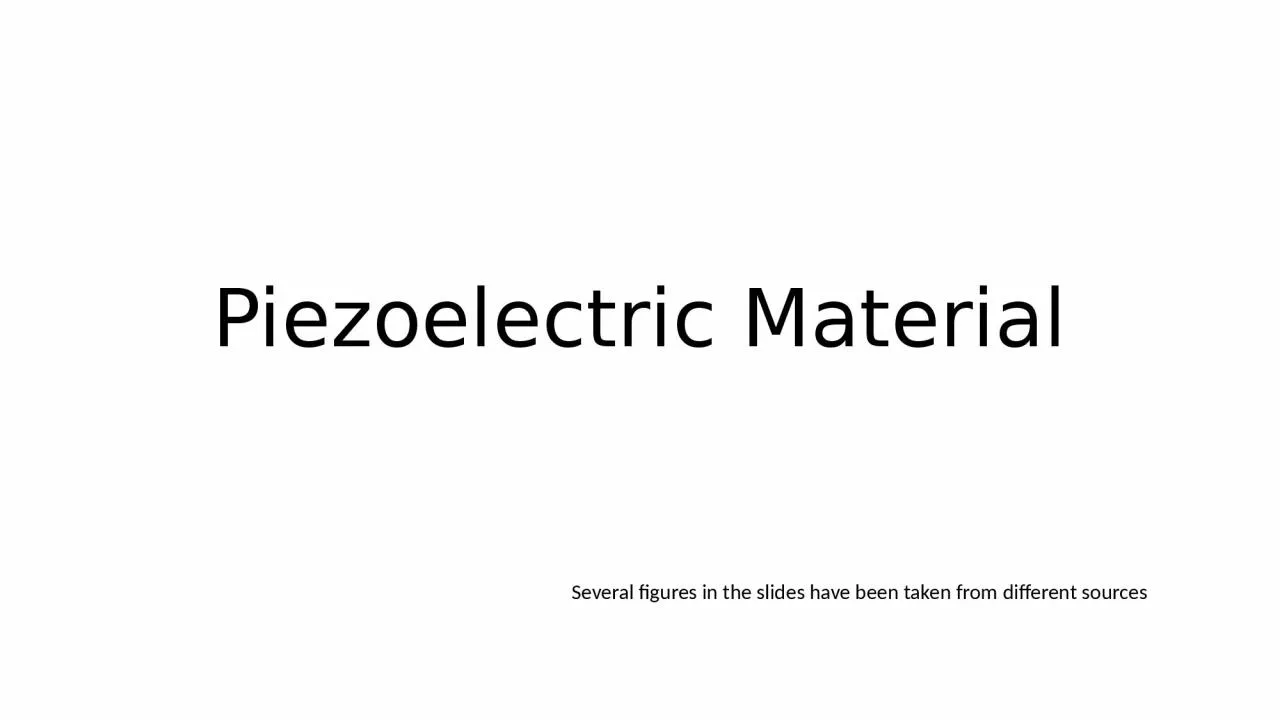

Piezoelectricity Pierre Curie and his brother Jacques first discovered the piezoelectricity phenomenon in quartz and Rochelle salt in 1880 and named the effect piezoelectricity from Greek ID: 1024617
Download Presentation The PPT/PDF document "Piezoelectric Material Several figures i..." is the property of its rightful owner. Permission is granted to download and print the materials on this web site for personal, non-commercial use only, and to display it on your personal computer provided you do not modify the materials and that you retain all copyright notices contained in the materials. By downloading content from our website, you accept the terms of this agreement.
1. Piezoelectric MaterialSeveral figures in the slides have been taken from different sources
2. PiezoelectricityPierre Curie and his brother Jacques first discovered the piezoelectricity phenomenon in quartz and Rochelle salt in 1880 and named the effect piezoelectricity (from Greek piezein, “to press”).– Piezoelectric effect was first found in certain crystalline minerals: zinc blende, tourmaline, quartz, rochelle salt, can sugar, etc.– In 1940, piezoelectricity was demonstrated in the first synthetic piezoelectric substance – Barium Titanate (BaTiO3).Most widely used piezoelectric material is Lead Zirconate Titanate (PbZrTiO3) commonly known as PZTDirect Piezoelectric EffectInverse (/converse) Piezoelectric Effect Electric charge generation across the material due to mechanical strainMechanical strain due to application of electric voltage
3. Piezoelectric behaviorPiezoelectric material has an inherent dipole moment (in direction of c-axis) & thus a spontaneous polarizationA volume of unit cells with their dipole moments oriented in the same direction is called a domainThe direction of the unit cells can change from one domain to the next,Rendering the total polarization of a sample zerob-axisa-axisc-axis- - - -+ + + +Direction of electric field applied(poling direction)Poling :Application of high electric field (2000 V/mm) atan elevated temperature results in realignment of thedomains in a way that the dipoles are mostly oriented in the direction of the applied field
4. Piezoelectric sensors and actuatorsInverse piezoelectric effect : ActuationDirect piezoelectric effect : Sensing
5. Curie TemperatureIf a piece of piezoelectric material is heated above acertain temperature, called a Curie temperature, it willlose piezoelectric properties. After cooling below the Curietemperature, the piezoelectric material will NOT regain itspiezoelectric propertiesAbove the Curie temperature, it exhibits simple cubic symmetry, with no dipoles moment
6. Mechanical Limitations– Mechanical stress sufficient to disturb the orientation of the domains in a piezoelectric material can destroy the alignment of the dipoles. Dropping a piezoelectric element could kill the material!Thermal Limitations– If a piezoelectric ceramic material is heated to its Curie point, the domains will become disordered and the material will be depolarized. The recommended upper operating temperature for aceramic usually is approximately half-way between 0°C and the Curie point.